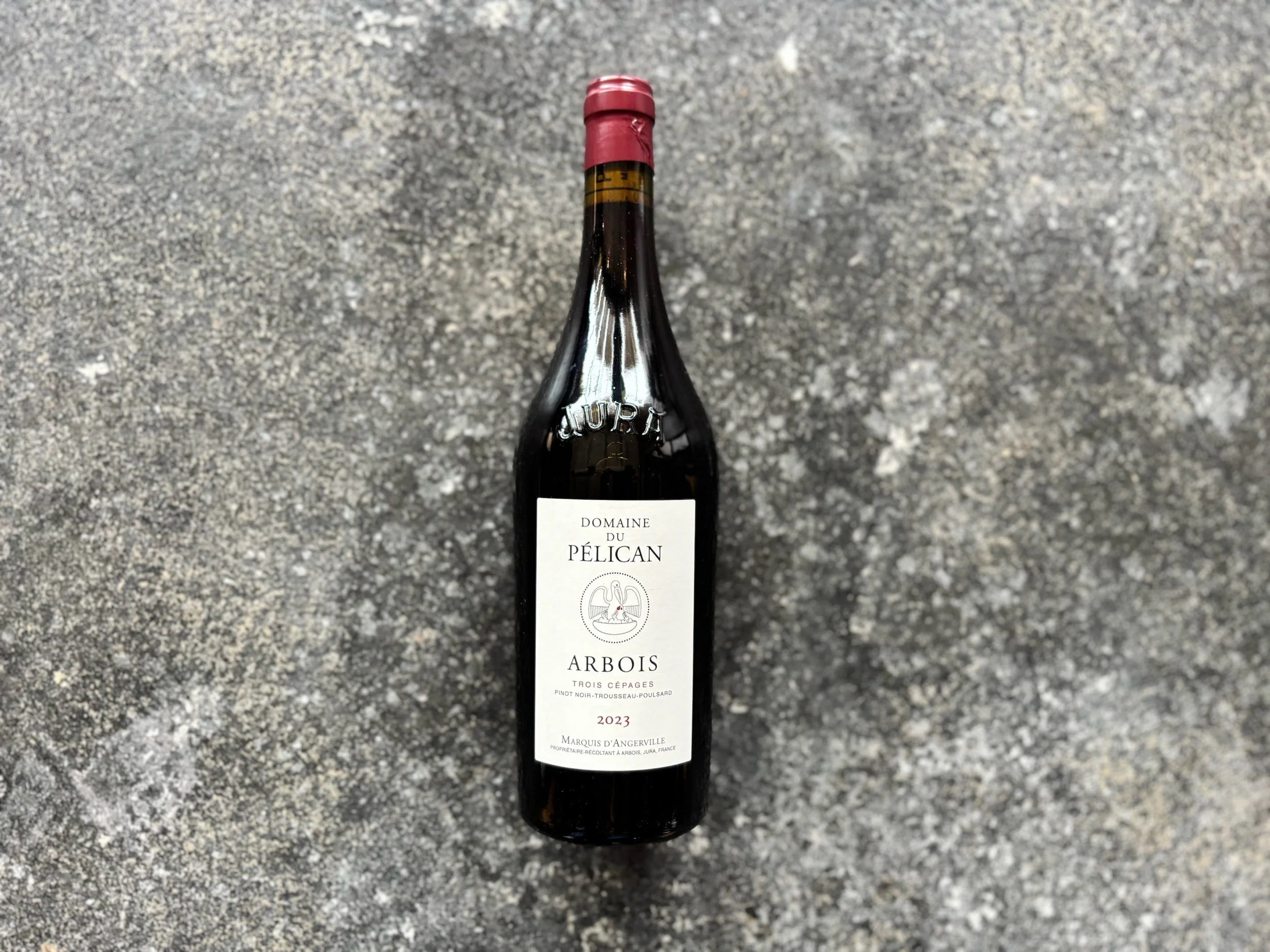 Image 1 of 1
Image 1 of 1


Domaine du Pélican 'Trois Cepages' Rouge 2023
Location: France, Jura, Arbois
Winemaker: Guillaume d’Angerville and François Duvivier
Grapes: Pinot Noir, Trousseau, Poulsard
Soil: The soils in relation to Burgundy and Jura, geologically formed at the same time, they are today divided by an ancient rift valley and following the Sâone river. Thus on the hills tops of Burgundy you find the same limestones that you find in the Jura, and on the foothills marls. The Jurassic marl is very different from the marl you find in Burgundy. The marl in Burgundy is white marl while in the Jura there is gray and blue marl.
Winemaking: Biodynamic/organic farming. Through low-dose treatments carried out according to the lunar calendar, biodynamics strengthens the organic life of the soils and gives the vines energy for better photosynthesis. The soils are worked with a plow and when a vine is pulled out, the plot is sown with green fertilizers for three years before replanting. The occasional use of organic compost promotes microbial life and the biological balance of the soil.
The Trois Cepages, as the name suggests, is a blend of three grapes. It has been produced since the winery’s inaugural vintage, in 2012. At the time, the decision was made to vinify all of their red grapes together, thereby creating this blend of Pinot Noir (60%), Trousseau (35%) and Poulsard (5%). The vineyards for Trois Cepages are all located in the village of Montigny-les-Arsures. The geology of the soils are composed of predominatly grey and black marls, partially covered with fallen rocks. The vineyards broadly face West, at an altitude between 300 and 400 meters. Elevage is in Burgundy barrels (50%) and foudre.
From the Importer Grand Cru Selection: Domaine du Pélican began with a bottle of wine.
"I tasted this bottle blind in a restaurant in Paris that I often go to. I always tell the sommelier to give me something blind and the only rule is that it has to be outside Burgundy. When he brought me this wine, I said, 'You forgot the rule, you brought me a wine from Burgundy.' And he said, 'I am afraid you're wrong.’’ - Guillaume d’Angerville
The wine was a bottle of Stéphane Tissot’s Chardonnay Arbois Les Bruyères 2005 and it left such an impression on Guillaume that it inspired him to begin a search for vineyards in the Jura. After leasing Chateau Chavanes in Montigny-les-Arsures, Guillaume gained access to 5 hectares of biodynamically farmed vines that had been impeccably replanted ten years prior by the former owner. The domaine is supported by an additional 5 hectares of vines never touched by chemicals and formerly farmed by Jean-Marc Brignot. In 2014, Jacques Puffeney announced he would be retiring and that Guillaume would be taking over 4 hectares of his vineyards.
Within a short of period of time, Guillaume and his team in the Jura, led by François Duvivier, have adopted a Jurassic sensibility and are poised to do great things.
Location: France, Jura, Arbois
Winemaker: Guillaume d’Angerville and François Duvivier
Grapes: Pinot Noir, Trousseau, Poulsard
Soil: The soils in relation to Burgundy and Jura, geologically formed at the same time, they are today divided by an ancient rift valley and following the Sâone river. Thus on the hills tops of Burgundy you find the same limestones that you find in the Jura, and on the foothills marls. The Jurassic marl is very different from the marl you find in Burgundy. The marl in Burgundy is white marl while in the Jura there is gray and blue marl.
Winemaking: Biodynamic/organic farming. Through low-dose treatments carried out according to the lunar calendar, biodynamics strengthens the organic life of the soils and gives the vines energy for better photosynthesis. The soils are worked with a plow and when a vine is pulled out, the plot is sown with green fertilizers for three years before replanting. The occasional use of organic compost promotes microbial life and the biological balance of the soil.
The Trois Cepages, as the name suggests, is a blend of three grapes. It has been produced since the winery’s inaugural vintage, in 2012. At the time, the decision was made to vinify all of their red grapes together, thereby creating this blend of Pinot Noir (60%), Trousseau (35%) and Poulsard (5%). The vineyards for Trois Cepages are all located in the village of Montigny-les-Arsures. The geology of the soils are composed of predominatly grey and black marls, partially covered with fallen rocks. The vineyards broadly face West, at an altitude between 300 and 400 meters. Elevage is in Burgundy barrels (50%) and foudre.
From the Importer Grand Cru Selection: Domaine du Pélican began with a bottle of wine.
"I tasted this bottle blind in a restaurant in Paris that I often go to. I always tell the sommelier to give me something blind and the only rule is that it has to be outside Burgundy. When he brought me this wine, I said, 'You forgot the rule, you brought me a wine from Burgundy.' And he said, 'I am afraid you're wrong.’’ - Guillaume d’Angerville
The wine was a bottle of Stéphane Tissot’s Chardonnay Arbois Les Bruyères 2005 and it left such an impression on Guillaume that it inspired him to begin a search for vineyards in the Jura. After leasing Chateau Chavanes in Montigny-les-Arsures, Guillaume gained access to 5 hectares of biodynamically farmed vines that had been impeccably replanted ten years prior by the former owner. The domaine is supported by an additional 5 hectares of vines never touched by chemicals and formerly farmed by Jean-Marc Brignot. In 2014, Jacques Puffeney announced he would be retiring and that Guillaume would be taking over 4 hectares of his vineyards.
Within a short of period of time, Guillaume and his team in the Jura, led by François Duvivier, have adopted a Jurassic sensibility and are poised to do great things.
